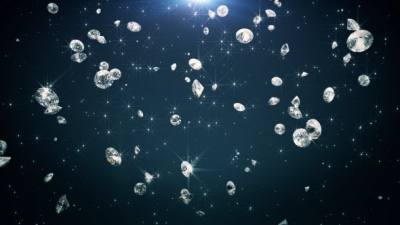
Scientists have speculated for years that diamonds are abundant in the cores of the smaller, cooler gas giants, Neptune and Uranus. But the larger gaseous planets, Jupiter and Saturn, were not thought to have suitable atmospheres.
But when they analyzed the pressures and temperatures for Jupiter’s and Saturn’s atmospheres, then modelled how carbon would behave, they determined that diamond rain is very likely to form in huge, storm-ravaged regions of Saturn, in particular, and in enormous quantities – as much as a 1,000 tonnes of diamonds every year. The biggest diamonds would likely be about a centimetre in diameter.
Powerful lightning storms on the two huge gas giants turn methane gas into carbon soot. As the soot falls, the pressure on it increases. After about 1,600 kms it turns to graphite the sheet-like form of carbon found in pencils. And the graphite keeps falling. By a depth of 6,000 kms, the immense pressure squeezes the graphite into diamonds, which float in seas of liquid methane and hydrogen. Eventually the gems sink towards the interior of the planet (a depth of 30,000 kms), where nightmarish pressure and heat melts the diamonds, forming a sea of molten carbon.
Picture Credit : Google




